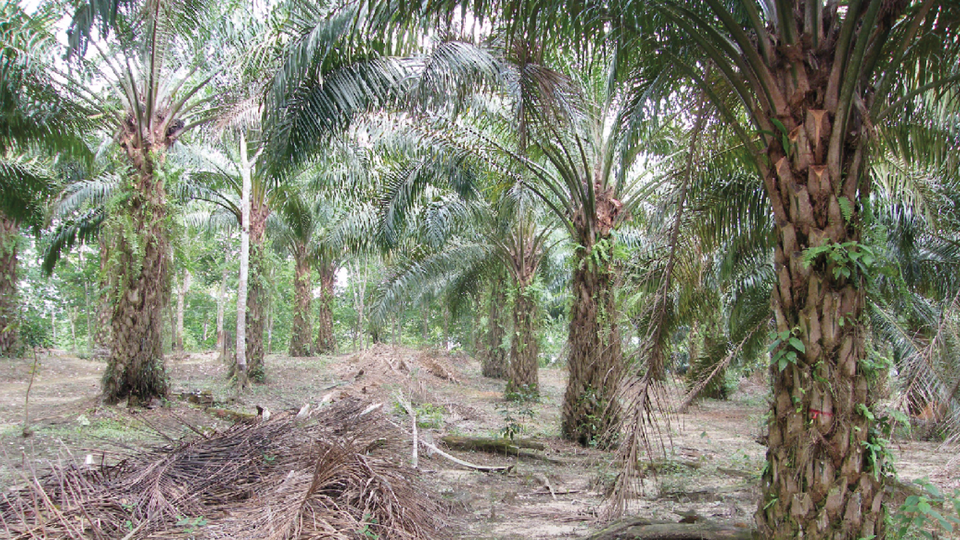Science News
Palm Oil Food Webs

This is the time of year we all eat a lot of palm oil, er, I mean, Halloween candy. And while sweets may be good for the soul and questionable for the stomach, they are downright terrible for the environment.
In the past 25 years, oil palm plantations have tripled, often destroying rainforests or other wild habitat in places like Indonesia and Malaysia. According to an article in Nature News in 2012, the land-use transformation for these trees is one of the greatest threats to biodiversity. The oil palm tree, Elaeis guineensis, is an incredibly efficient producer of palm oil, and finds its way into many products we use everyday—food, cosmetics, and even biodiesel fuel.
While we can see that these plantations affect biodiversity negatively, it’s been difficult to measure how. To determine this, scientists from Indonesia and Germany recently measured the effects of oil palm plantations in the Jambi province of Sumatra, Indonesia. And the team looked beyond just species richness—they also measured the way energy flows through the ecosystems, comparing secondary rainforests, managed rubber forests, and the oil palm plantations.
Energy flux in an ecosystem begins with solar energy absorbed by plants, then is transported to the herbivores that eat the plants and then on to apex predators, before ending with decomposers such as bacteria. While some loss in metabolic energy is expected (for example when energy is converted to body heat and radiated away), a large loss of energy indicates a reduction in the functioning of the ecosystem. The researchers basically followed the food webs within 32 different sites in the Jambi province.
(For more on food webs and ecosystem functions, check out this video the Academy produced for the Khan Academy.)
The team found that oil palm plantations deliver a one-two punch to biodiversity. The plantations are less biodiverse than commercial rubber tree plantations, and contain around half the number of species when compared to natural forests. Furthermore, calculating metabolic energy flow within each habitat, the authors also found that the efficiency of oil palm food webs is less than half that of natural forests. This indicates that species loss can lead to a direct and proportionate loss in the functioning of an ecosystem.
Their results are published today in Nature, with hopes that communities will begin to recognize the overall value of natural forests, and not just the immediate value of oil palm plantations.
Palm oil can be harvested sustainably, and National Geographic recently posted an in-depth article looking at sustainable oil palm plantations and orangutan health. WWF (the World Wildlife Fund) has a wealth of information on palm oil, including a scorecard of palm oil users.
Image: Malte Jochum and Andrew Barnes